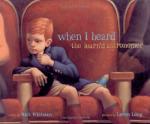|
This section contains 548 words (approx. 2 pages at 400 words per page) |

|
Diction
One of Whitman's most important stylistic devices in "When I Heard the Learn'd Astronomer" is his extremely careful choice of wording, or diction. When, in lines 2 and 3, the meaning of the poem stresses the ordered and categorical process of science and mathematics, Whitman's language is full of mathematical words such as "proofs," "figures," "charts," and "measure." Or, when he is attempting to suggest the actual and magnificent nature of the night sky, Whitman describes the speaker's wandering with the words, "rising and gliding," which suggest the behavior of the stars or astronomical bodies themselves. This language is not simply descriptive; it is meant to bring out the poet's thematic goals because of the resonance of the words in the reader's mind.
Another example of the importance of diction to the poem is Whitman's use of the common language of everyday speech, such as the contraction "learn'd" for "learned...
|
This section contains 548 words (approx. 2 pages at 400 words per page) |

|




